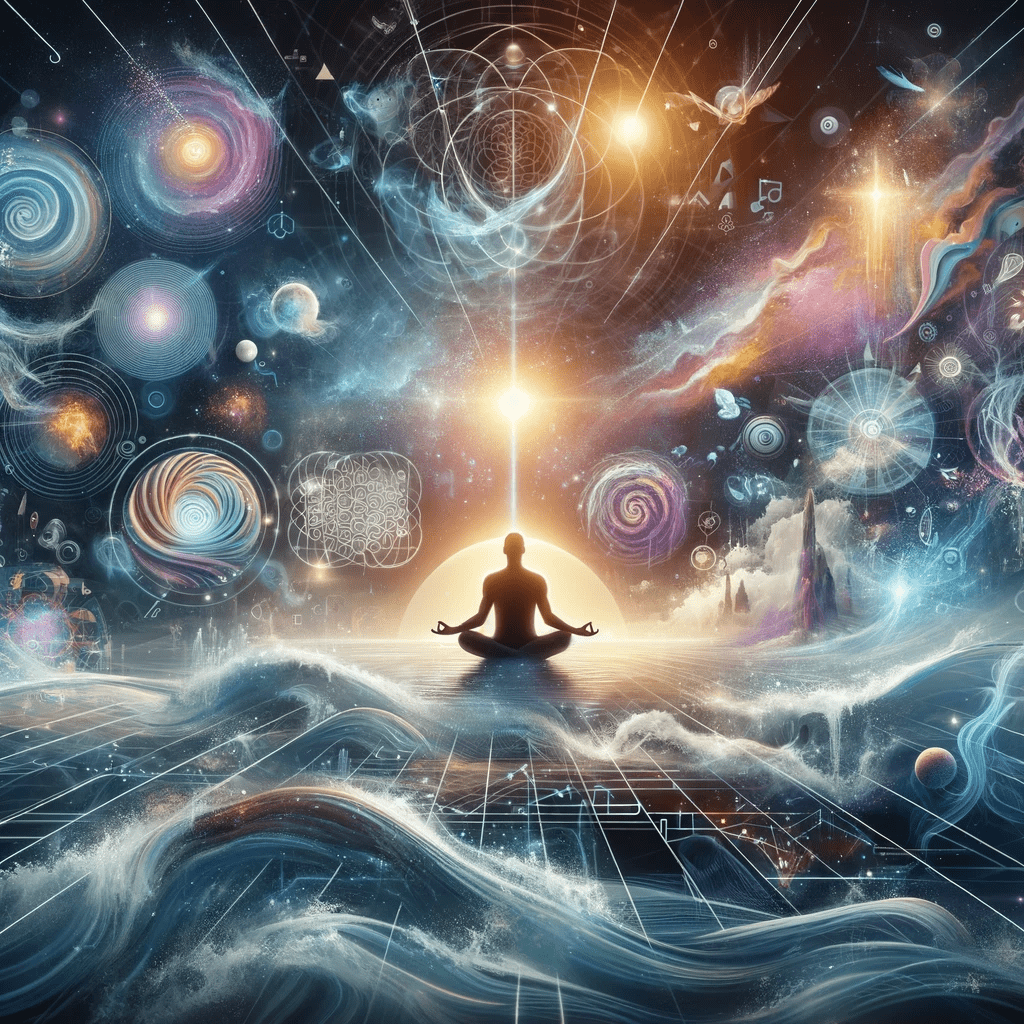Interaction with Non-Physical Realms

The interaction with non-physical realms, often explored through concepts such as metaphysics, spirituality, and quantum physics, ventures into the territory of uncharted knowledge where objective truths might be elusive, but subjective experiences could be profound and life-altering. It’s a realm that’s captivated the minds of scholars, researchers, mystics, and curious minds for ages.
Non-physical realms typically refer to dimensions or realities that exist beyond our tangible, physical universe. These may include theoretical constructs like parallel universes or multiverses, spiritual realms such as heavens or hells, and dimensions of consciousness or states of awareness beyond ordinary waking consciousness. Those who subscribe to the idea of non-physical realms often propose various mechanisms of interaction, such as through meditation, altered states of consciousness, dream work, near-death experiences, or even quantum entanglement.
Historically, interactions with non-physical realms have been reported in numerous cultural, spiritual, and religious contexts. Ancient shamanic practices, for instance, often involve journeying into non-physical realms for wisdom or healing. Many of the world’s religious traditions speak of mystics, prophets, or sages who have had profound experiences in non-physical dimensions. Modern day explorers include not just spiritual seekers but also physicists, psychologists, and neuroscientists, who bring new tools and perspectives to the ancient quest for understanding.
Dr. Roger Penrose, a renowned physicist and mathematician, and Dr. Stuart Hameroff, an anesthesiologist and psychologist, propose a quantum theory of consciousness known as Orchestrated Objective Reduction (Orch-OR). They suggest that consciousness originates at the quantum level inside neurons, potentially linking the mind to the fabric of the universe. This theory, although controversial, could provide a bridge between physical and non-physical realms.
There are various examples of literature exploring non-physical realities. “The Field” by Lynne McTaggart investigates scientific discoveries suggesting that a field of energy connects all of life and that consciousness extends beyond the individual. Another, “The Holographic Universe” by Michael Talbot, proposes that the universe is a giant hologram, encoding information at the quantum level and creating our physical reality.
A New York Times article titled “The Quantum Consciousness Debate: Can Science Prove We’re More than Matter?” discusses the intersection of quantum physics and consciousness, suggesting the possibility of non-physical realms. However, these claims are often presented with caution, reflecting the ongoing debate in the scientific community.
Some sources often make more extreme claims, proposing direct methodologies to access non-physical realms, such as astral projection or channeling spiritual entities.
- Dr. Roger Penrose and Dr. Stuart Hameroff propose a quantum theory of consciousness known as Orchestrated Objective Reduction (Orch-OR) – Source: Quantum Physics in Neuroscience and Psychology: A Neurophysical Model of Mind–Brain Interaction, Penrose, R., & Hameroff, S. (2006).
- Lynne McTaggart’s book “The Field” discusses scientific discoveries suggesting that a field of energy connects all life and our consciousness extends beyond the individual – Source: “The Field: The Quest for the Secret Force of the Universe”, McTaggart, L. (2002).
- A New York Times article titled “The Quantum Consciousness Debate: Can Science Prove We’re More than Matter?” discusses the intersection of quantum physics and consciousness, suggesting the possibility of non-physical realms – Source: New York Times (2018).
Physicists like Roger Penrose suggest the possibility of quantum consciousness, which could theoretically link to non-physical realms, while many others remain skeptical. Some psychologists and neuroscientists, such as Rick Strassman, author of “DMT: The Spirit Molecule,” are interested in altered states of consciousness as potential gateways to non-physical realities.
Books such as “The Field” by Lynne McTaggart and “The Holographic Universe” by Michael Talbot discuss scientific research pointing toward a deeper interconnectedness of reality and a potentially non-physical dimension of consciousness. Yet, these authors also acknowledge the provisional and often controversial nature of these ideas.
The subject of interacting with non-physical realms is rich, diverse, and controversial. It encapsulates the human desire for exploration and understanding of our place in the cosmos, from the empirical to the experiential. While some propose that the veils between physical and non-physical are thinning with advancements in fields like quantum physics and neuroscience, it remains an area where certainty is elusive, and mystery persists.
